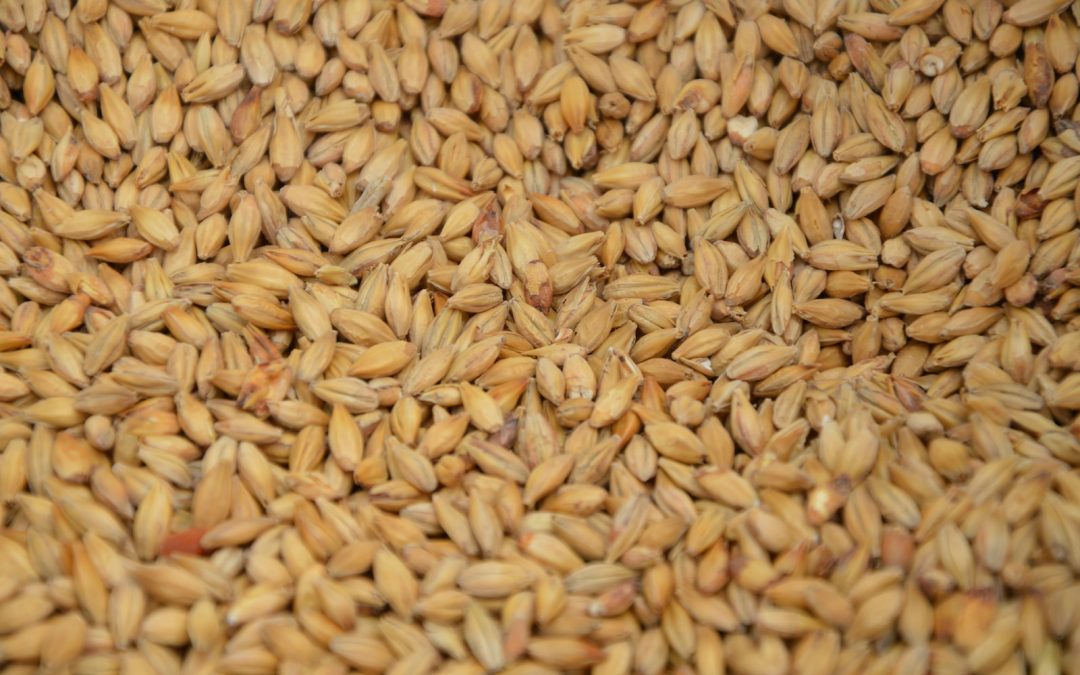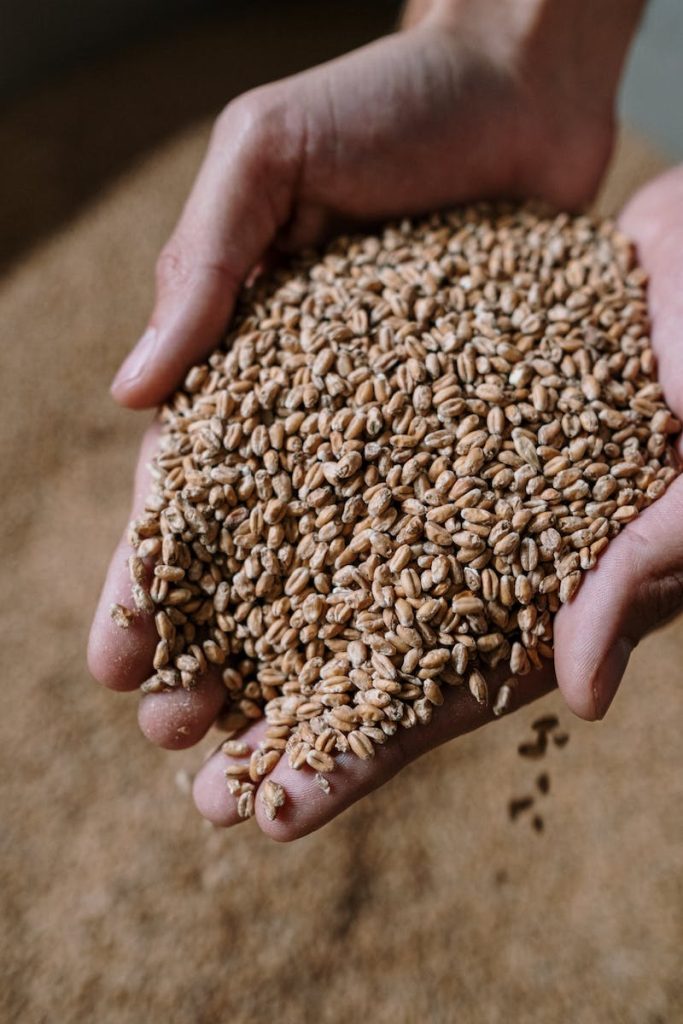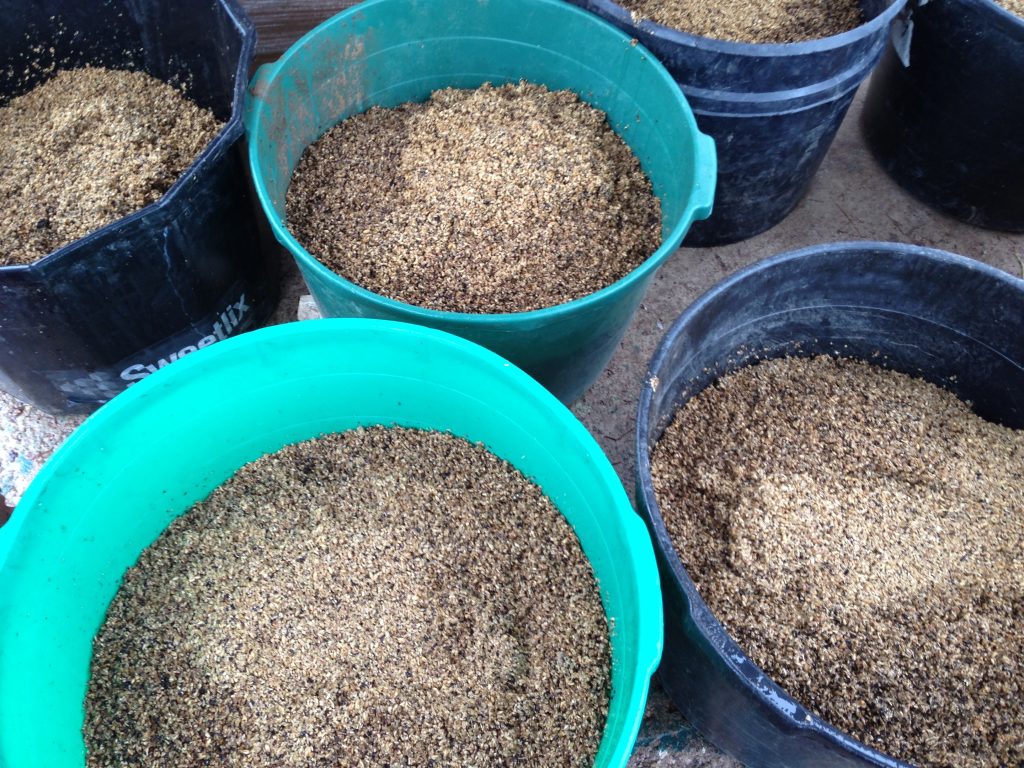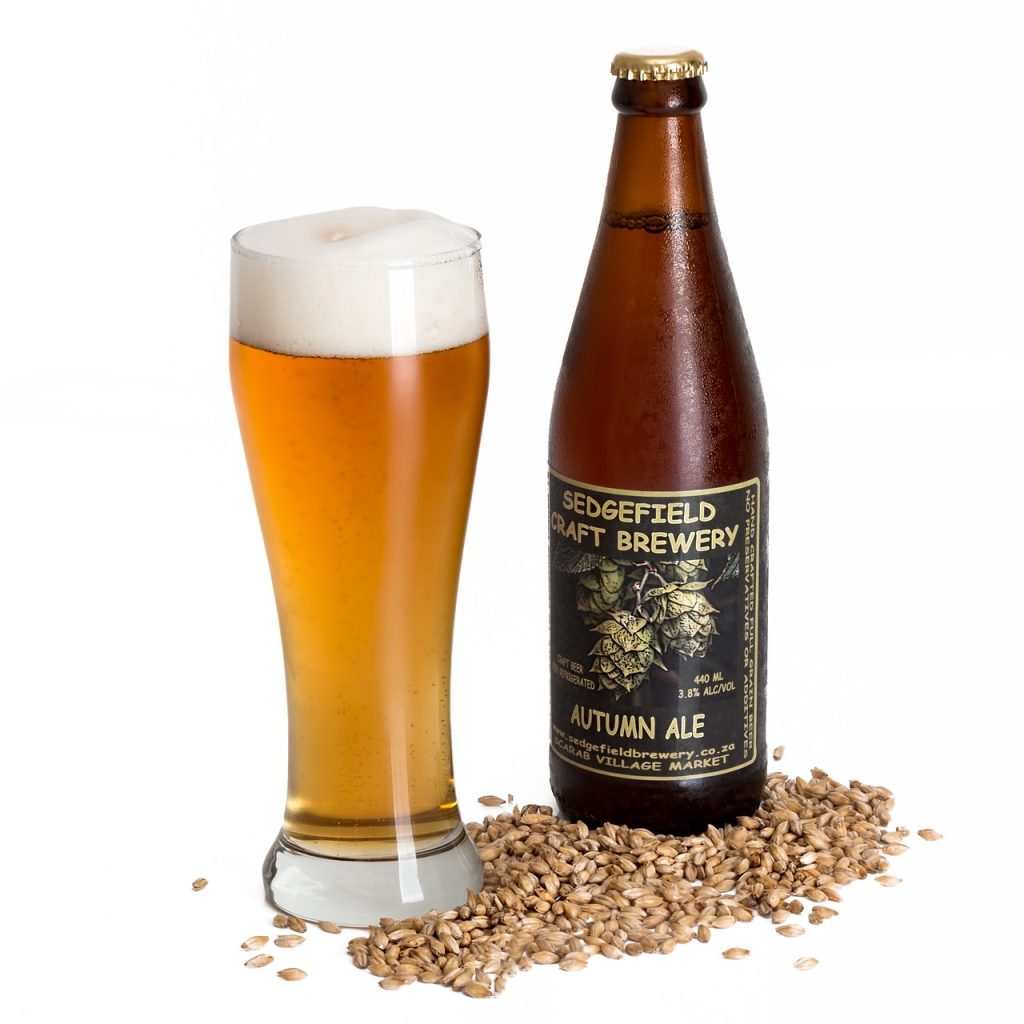Step into the world of beer and get ready to unravel the mysteries behind the art of malting. Have you ever wondered what gives your favorite brew that distinct flavor and aroma? Look no further as we take you on a journey through the intricate process of malting and explain how it impacts the taste and quality of your beloved beer. From selecting the perfect grains to undergoing the meticulous malting process, we will explore the fascinating world of malt and its significance in the creation of your go-to pint. So grab a glass and prepare to appreciate your beer in a whole new light!
The Basics of Malting
What is malting?
Malting is the process of germinating and drying grains, typically barley, to produce malt. It is a crucial step in the brewing process as malt provides the foundation for the flavor, color, and fermentability of beer. During malting, enzymes are activated, converting the starches in the grain into sugars that can be fermented by yeast.
The malting process
The malting process begins with steeping the grains in water, allowing them to absorb moisture and initiate germination. The grains are then spread out on a malting floor or in a germination box, where they are turned regularly to encourage even growth. After germination, the grains are gently kilned to halt the germination process and dry the malt. The duration and temperature of kilning can have a significant impact on the flavor and color development of the malt.
Types of malt
There are various types of malt available, each with its own unique characteristics. Some common types include pale malt, Munich malt, Vienna malt, caramel malt, roasted malt, and specialty malts. These malts differ in terms of their color, flavor, and enzyme content, allowing brewers to create a wide range of beer styles and flavors.
The Importance of Malting in Brewing
Enzymatic activity
One of the vital functions of malting is the activation of enzymes within the grain. These enzymes, such as alpha-amylase and beta-amylase, convert the complex starches in the grain into fermentable sugars. The level of enzymatic activity in malt affects the fermentability of the wort, which in turn influences the body and sweetness of the final beer.
Color and flavor development
The malting process also plays a crucial role in the development of color and flavor in beer. The duration and temperature of kilning determine the level of Maillard reactions, which are responsible for the rich amber and malt flavors found in certain styles of beer. Different malts, such as roasted malt or caramel malt, can add distinct flavors ranging from chocolate to toffee to the final brew.
Foam stability
Malt contributes to the foam stability and head retention of beer. The proteins found in malt provide the necessary foam-building properties, creating a dense and long-lasting head on the beer. Without malt, the beer would lack the desirable aromatic and visual qualities associated with a well-crafted brew.
Conversion of starches to sugars
One of the primary objectives of malting is to convert the starches in the grain into fermentable sugars. Through enzymatic activity, malting breaks down the complex starch molecules into simpler sugars like maltose and glucose. These sugars are then available for yeast to ferment into alcohol and carbon dioxide during the brewing process.
History of Malting
Ancient origins
The process of malting can be traced back to ancient civilizations. Egyptians were known to produce malted barley as far back as 4,000 B.C., using it for both brewing beer and for making bread. Malting techniques gradually spread to other cultures, including the Mesopotamians and Greeks.
Malting in medieval times
During the medieval period, malting and brewing became integral parts of daily life. Monasteries played a significant role in developing and refining malting techniques during this time. Monks were known for their expertise in both malting and brewing, which contributed to the advancement of the craft.
Industrialization of malting
With the rise of the Industrial Revolution in the 18th century, malting underwent significant changes. The invention of new machinery and the development of larger-scale malting facilities allowed for increased production and consistency. Industrialization also brought about the use of new kilning techniques and malt varieties, further expanding the possibilities for brewers.
Different Types of Malt
Pale malt
Pale malt is the most widely used type of malt in brewing. It has a light color and contributes a clean, crisp flavor to beers. Pale malt serves as the base malt in many beer recipes, providing the essential sugars necessary for fermentation.
Munich malt
Munich malt is known for its rich and malty flavor profile. It adds depth and complexity to beers, often imparting notes of bread, toast, and biscuit. Munich malt is frequently used in darker beer styles such as Oktoberfest or Dunkel, as well as in malt-forward ales and lagers.
Vienna malt
Vienna malt shares similarities with Munich malt but has a slightly lighter color and milder flavor. It adds a pleasant malty sweetness and subtle nuttiness to beers. Vienna malt is commonly used in Vienna lagers, amber ales, and other styles where a balanced malt character is desired.
Caramel malt
Caramel malt, also known as crystal malt, undergoes a specialized kilning process that caramelizes the sugars within the grain. This results in a range of caramel and toffee flavors, as well as increased sweetness and residual sugars in the final beer. Caramel malt is popular in a wide variety of beer styles, including stouts, porters, and IPAs.
Roasted malt
Roasted malt, such as chocolate malt or black malt, is kilned at higher temperatures, resulting in a darker color and more pronounced roasted flavors. These malts often contribute notes of coffee, chocolate, or burnt toast to beers. Roasted malts are commonly used in stouts, porters, and other robust, dark beer styles.
Specialty malts
Specialty malts encompass a wide range of malts that have undergone unique processing methods to achieve specific flavors and characteristics. They can include malted wheat, rye malt, smoked malt, or any other malt that provides distinct qualities to the beer. Brewers use specialty malts to add complexity and uniqueness to their creations.
Quality Control in Malting
Testing for germination
To ensure the quality of malt, it is essential to test for germination. This involves taking samples of the malt and allowing them to germinate under controlled conditions. If a high percentage of grains show signs of germination, it indicates good malt quality.
Inspecting for moisture content
Moisture content is a crucial factor in malt quality control. Excess moisture can lead to mold or fungal contamination, while insufficient moisture can result in poor germination. Careful inspection and monitoring of moisture levels are necessary throughout the malting process.
Evaluating malt color and flavor
The color and flavor of malt are critical aspects of quality control. Malt is evaluated visually for its color and taste-tested to ensure it meets flavor expectations. Brewers rely on consistent color and flavor profiles to create their desired beer styles.
Detecting impurities
Impurities in malt can affect the quality of the final beer. Common impurities include foreign materials, such as dirt or stones, as well as chemical or microbial contaminants. Comprehensive quality control measures aim to identify and eliminate any impurities before the malt is used in brewing.
Malting Techniques from Around the World
Scotch malting
Scotch malting, also known as floor malting, is a traditional method of malting that originated in Scotland. The process involves spreading the grain on a malting floor and manually turning it by hand. This labor-intensive technique allows for precise control over the malting process, resulting in unique flavors and characteristics.
Floor malting
Floor malting is another traditional malting technique that predates industrial methods. In floor malting, the grains are spread out on large floors or racks, and germination is achieved by regularly turning the grain by hand or with specialized machinery. This technique is still used in some craft breweries and provides a hands-on approach to malting.
Pneumatic malting
Pneumatic malting, also known as modern or commercial malting, relies on automated processes and machinery. It involves the use of truck-mounted or facility-based malting vessels where temperature and moisture are controlled automatically. Pneumatic malting allows for consistent and efficient production on a large scale.
The Role of Malt in Beer Brewing
Choosing the right malt for different beer styles
Selecting the appropriate malt is essential for creating beers that align with specific styles. Different beer styles require variations in malt flavor, color, and fermentability. Brewers carefully choose their malts based on the desired outcome, whether it’s a crisp and light lager, a hop-forward IPA, or a robust stout.
Malt’s impact on aroma and taste
Malt has a significant impact on both the aroma and taste of beer. The flavors and aromas derived from malt can range from sweet and caramel-like to toasty and nutty. By selecting specific malts and controlling the malting process, brewers can manipulate the malt’s influence on the final beer’s sensory profile.
Balancing malt sweetness with hop bitterness
The interplay between malt sweetness and hop bitterness is a crucial element in beer brewing. Malt provides the necessary sugars that balance the bitterness derived from hops. The ability to achieve the right balance allows brewers to create well-rounded and harmonious beer flavors.
Recent Innovations in Malting
Craft malting revival
In recent years, craft malting has seen a resurgence, driven by the desire for unique and locally sourced ingredients. Craft maltsters focus on small-batch production, often using heirloom or specialty grains. This revival has allowed brewers to explore new flavors and support sustainable agricultural practices within their local communities.
New malt varieties and flavors
The constant innovation in agriculture and breeding has led to the development of new malt varieties and flavors. These new malts can offer unique characteristics, such as increased intensity of flavors or improved enzyme activity. Brewers can now experiment with a wider array of malts, expanding the possibilities for creating distinct beers.
Sustainable malting practices
With a growing focus on sustainability, maltsters are adopting environmentally friendly practices. This includes sourcing grains from local farmers, reducing energy consumption during kilning, and implementing water-saving techniques. Sustainable malting practices contribute to the overall eco-friendliness of the brewing industry.
Common Malting Problems and Solutions
Mold and fungal contamination
Mold and fungal contamination can occur during the malting process, leading to off-flavors and potential health risks. Implementing strict hygiene practices, monitoring moisture levels, and regular testing can help identify and mitigate these issues.
Inconsistent malting results
Inconsistency in malting results can have a significant impact on the final beer product. Factors such as variations in temperature, moisture content, and enzyme activity can lead to inconsistent malt quality. Careful monitoring and regular adjustments in the malting process can help ensure more consistent results.
Managing grain pests
Pests can be a challenge in the malting industry, as they can cause grain spoilage and affect malt quality. Implementing proper storage and handling practices, including regular fumigation and hygiene protocols, can help prevent and manage grain pests.
Tips for Homebrewers
Selecting quality malt
When brewing at home, it’s crucial to select high-quality malt for optimal results. Look for reputable suppliers that provide detailed information about their malts, including origin, maltster, and specifications. Experimenting with different malt varieties can help expand your brewing repertoire.
Understanding malt specifications
Understanding malt specifications can greatly assist homebrewers in achieving their desired outcomes. Pay attention to factors such as Lovibond rating, extract potential, and diastatic power, as these provide valuable insights into the malt’s color, fermentability, and enzymatic activity.
Experimenting with different malt combinations
Homebrewing offers the opportunity to experiment with different malt combinations to create unique flavors and styles. Don’t be afraid to mix different base malts, specialty malts, and roasted malts to create your own signature brews. Keeping detailed notes will allow you to replicate successful recipes and tweak them to perfection.
By decoding the art of malting, you gain a deeper understanding of the pivotal role it plays in the brewing process. Whether you’re a professional brewer or a homebrew enthusiast, exploring the world of malts can unlock a world of flavors and possibilities for creating exceptional beers. Cheers to the art of malting and the diverse range of flavors it brings to your glass!
© 2023 by brewandbeyond.com. All rights reserved. No part of this document may be reproduced or transmitted in any form or by any means, electronic, mechanical, photocopying, recording, or otherwise, without prior written permission of brewandbeyond.com.






